Prior to my visit to Aigas, I was only aware of it’s existence through my mother-in-law, who currently works part time in the House of Aigas. Sir John Lister-Kaye purchased it, and its estate, in 1976 with plans to create the first field studies centre in the Highlands. Currently, it is the home of a Wildcat Conservation Breeding Programme, a hub for environmental education that receives visitors from all over the UK, and a base for a wide variety of programmes for visitors, the financial proceeds of which support the nature regeneration and environmental education at the centre.
On Tuesday 4th June, I met with Fin, Milo and Bethany, the resident education officers at the estate for a tour and chat about their expertise in environmental education. We met in the education centre, which was a fantastic building filled with stuffed wild animals, scientific instruments used for research and teaching, and importantly, good coffee and snacks!
We chatted for around an hour about many things relating to environmental education – how it’s important for mental health – how many who struggle in the confines of a classroom environment flourish when given the opportunity to spend time learning outdoors. We spoke about land management in Scotland – how it is changing and the resistance to change. They were very aware of the challenges of reintroducing larger predators into Scotland again, such as the wolf and the lynx, but were mostly very much in favour of it. I was given a couple of new book recommendations too – The Living Mountain: A Celebration of the Cairngorm Mountains of Scotland, and The Lynx and Us, which can be downloaded as a free ebook from the Scotland:The big picture website.
The education officers emphasised the importance of enjoying the outdoors. If the students are hunkered over a quad-rat, and it’s too cold and they are getting miserable, don’t be afraid to go inside and look at what has been discovered outside. Encourage pupils to take pictures of what they see. Make sure they are enjoying the experience!
Tree regeneration, osprey nests and beavers
After this, we took a short walk up to the loch.
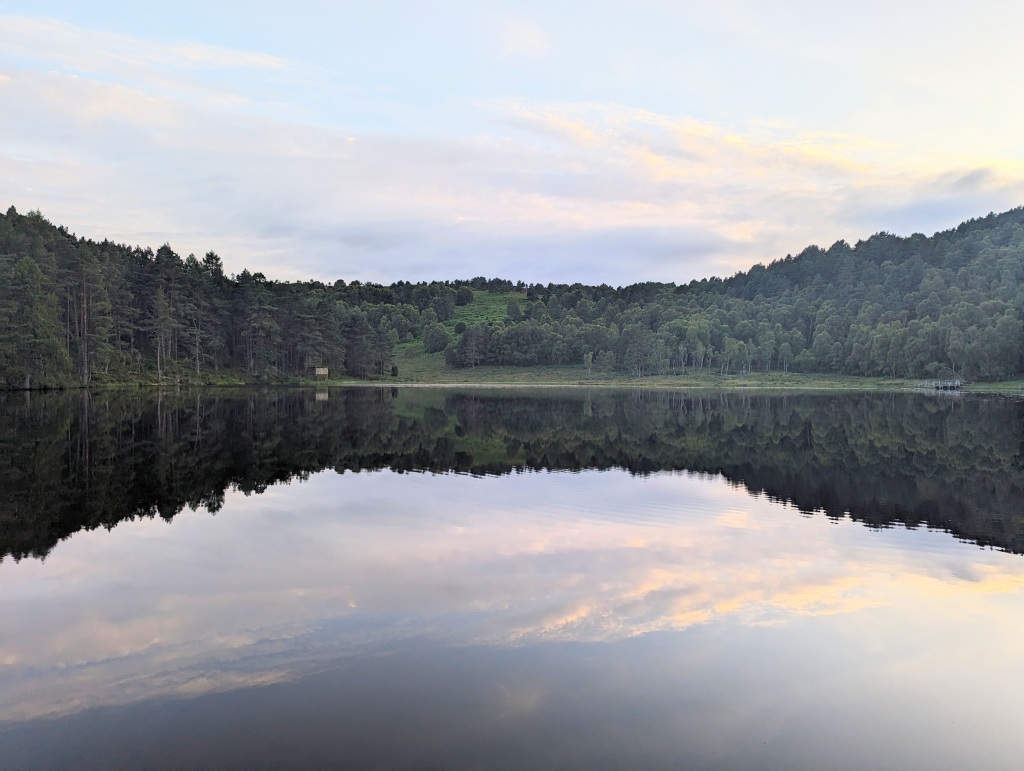
One of the first things Sir John did was to cull back the deer population on the estate, to allow for the regeneration of native woodland. I was stunned to look across the loch and see a vast forest that only a few decades ago did not exist, and what amazed me most was that not one tree in that area was planted by hand. As we looked across, there was a bitter wind and the rain was starting to fall, so we didn’t linger. The photo above has been kindly provided by Bethany. There was just enough time however for Milo to set up a small telescope and I was able to see the osprey in his nest. One of the rangers has a fantastic piece on appreciating common birds – on trying to spot Ospreys and settling for herons – that you can read here. Interestingly, back in May 2022, an article was written by a ranger at the estate pining for Ospreys to make their home at Aigas Loch. Well, it turns out they didn’t have to wait long. If you zoom in on the picture above, you might be able to spot what looks like a telegraph pole. At the top of that pole today are a pair of nesting Ospreys.
Walking back to the education centre, we stopped by a small burn to see the evidence of busy beavers.
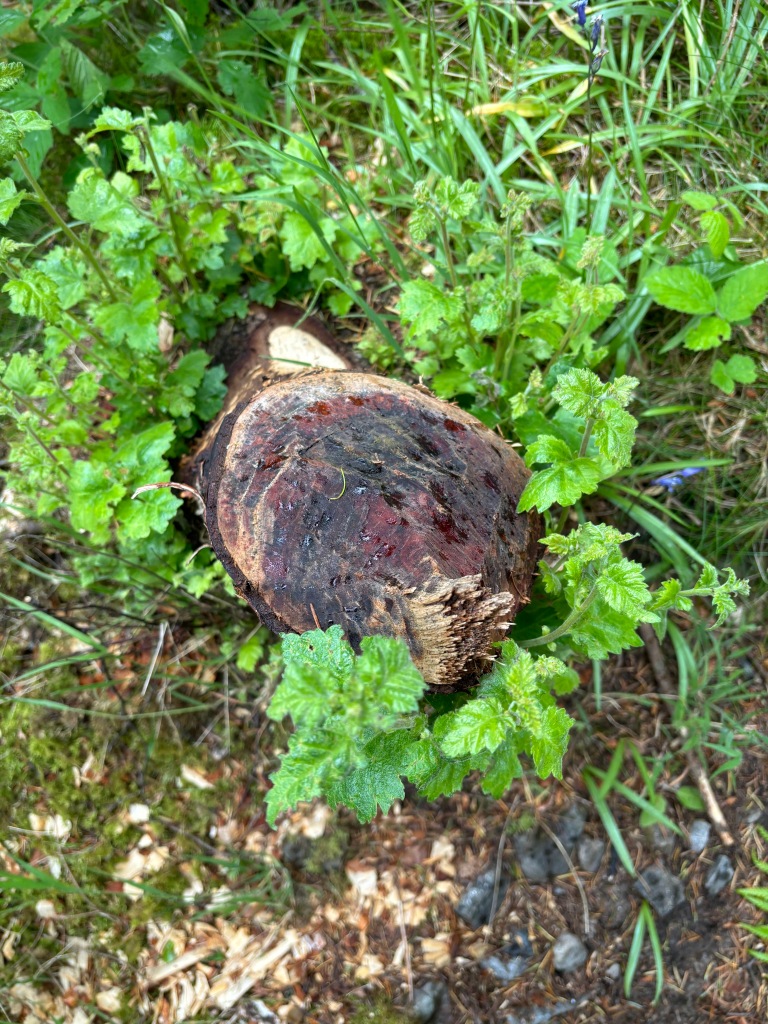
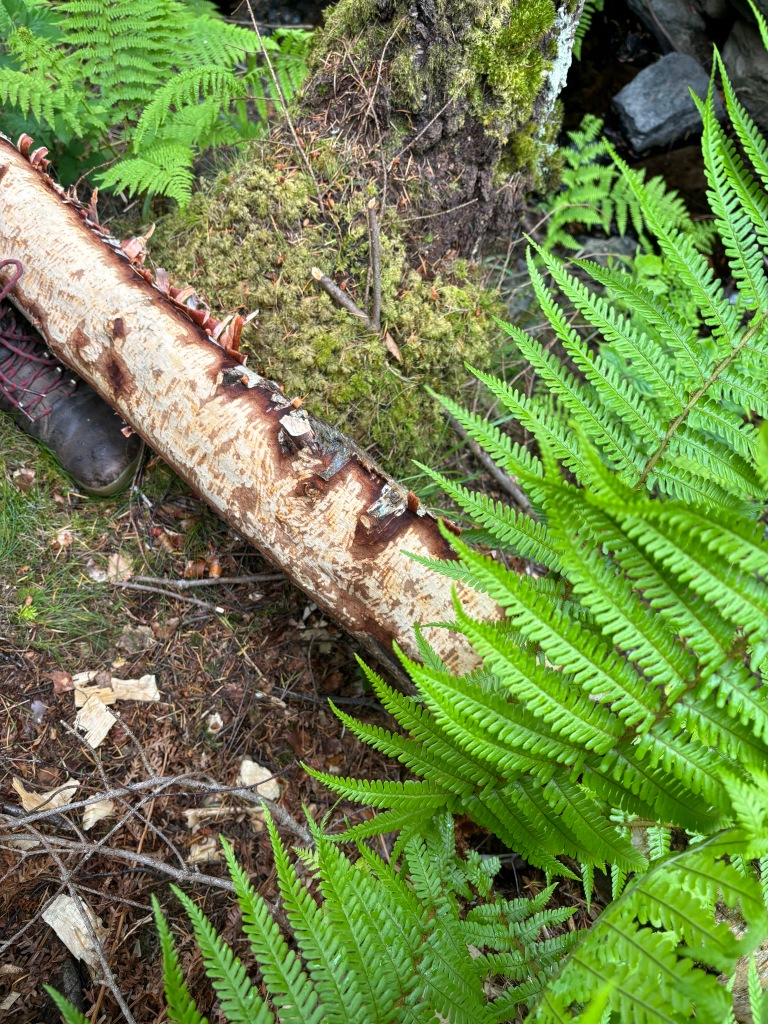
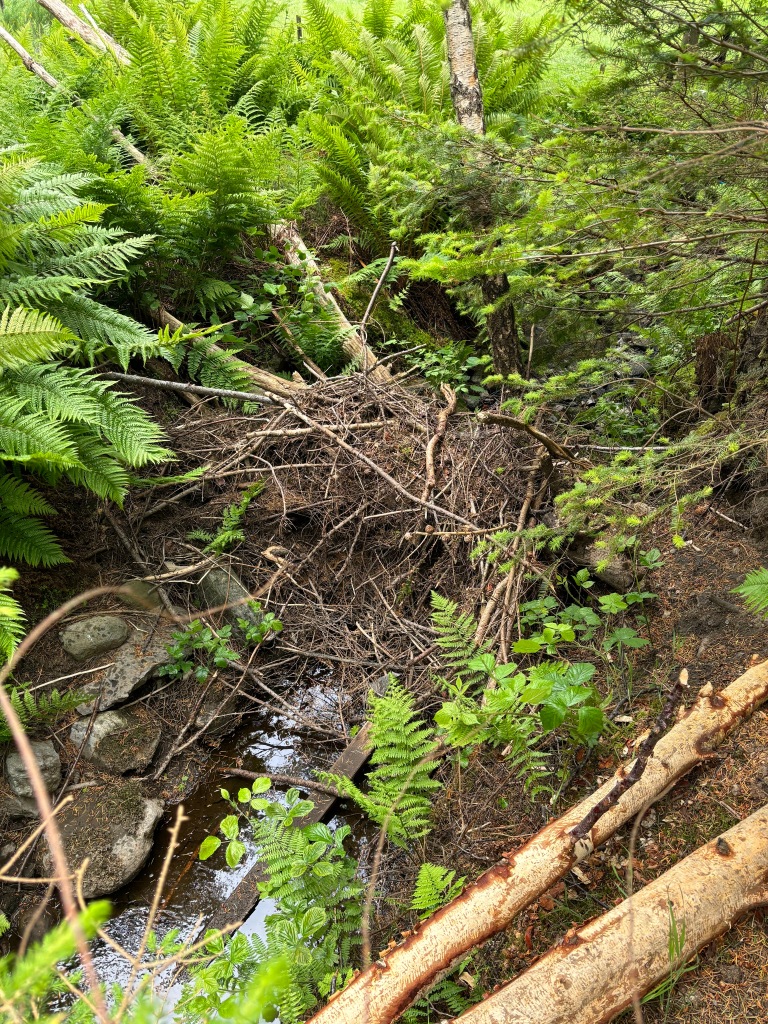
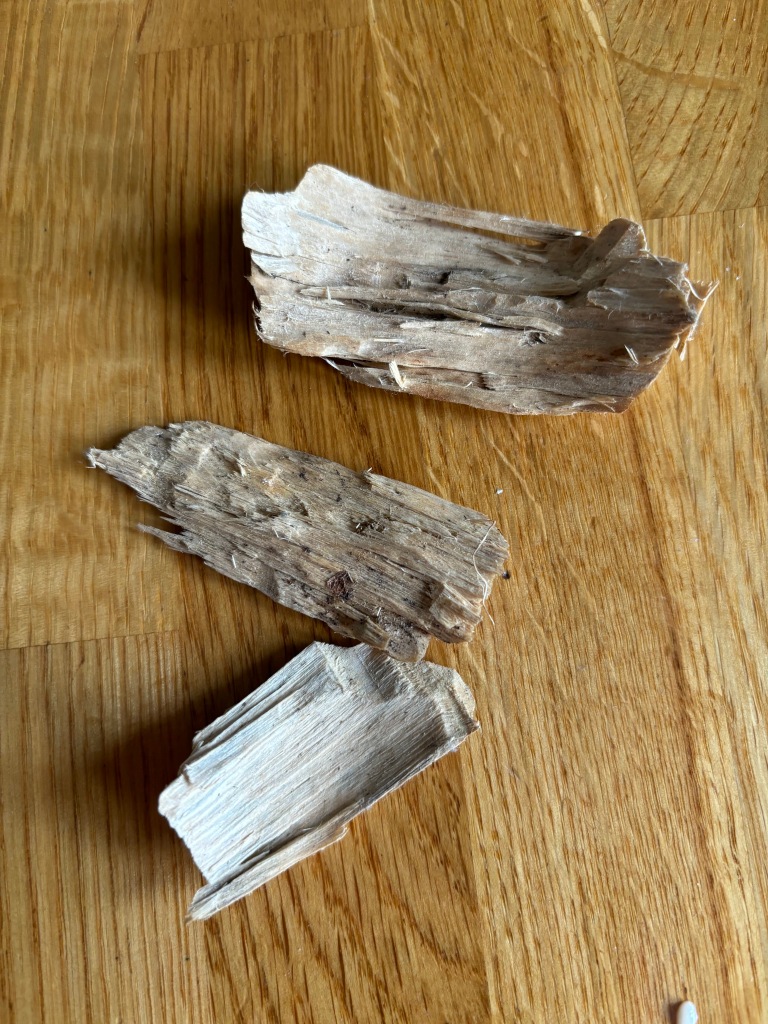
Sadly I wasn’t able to see the Wildcats, as they are breeding at the moment. However here is a very helpful video that explains the rational behind Aigas’ breeding program:
Finally, Fin shared with me a fascinating and brief video that helps to explain the far-reaching positive impacts of apex predators, that I’d highly recommend you watch.
Reflection
I’m starting to realise, especially as my sabbatical period draws to a close, that I am only really on the beginning of a bigger journey. Fin, Milo and Bethany are conservation experts – they have training, degrees or PhDs in biology, ecology and environmental studies, but they are excited when anyone takes an interest in the environment. Milo very interestingly said that when he was completing his degree, he always thought that you had to travel abroad to study nature, but has come to see that it is right on our doorstep, we only need look. This is certainly true – take time to watch any episode in the recent BBC Springwatch series on BBC 2 and you might be surprised! I think the job of interested teachers (whose area of expertise is not biology, ecology or even science) is to pass on that enthusiasm to young people and provide them with opportunities to see, and delight in, what is on their doorstep.
Anyway, I’m hoping this partnership with Aigas can continue for many years to come. And another opportunity was suggested – exploring Carrifran Wildwood in the Borders, another example of a woodland rewilding project much closer to Edinburgh than Aigas!



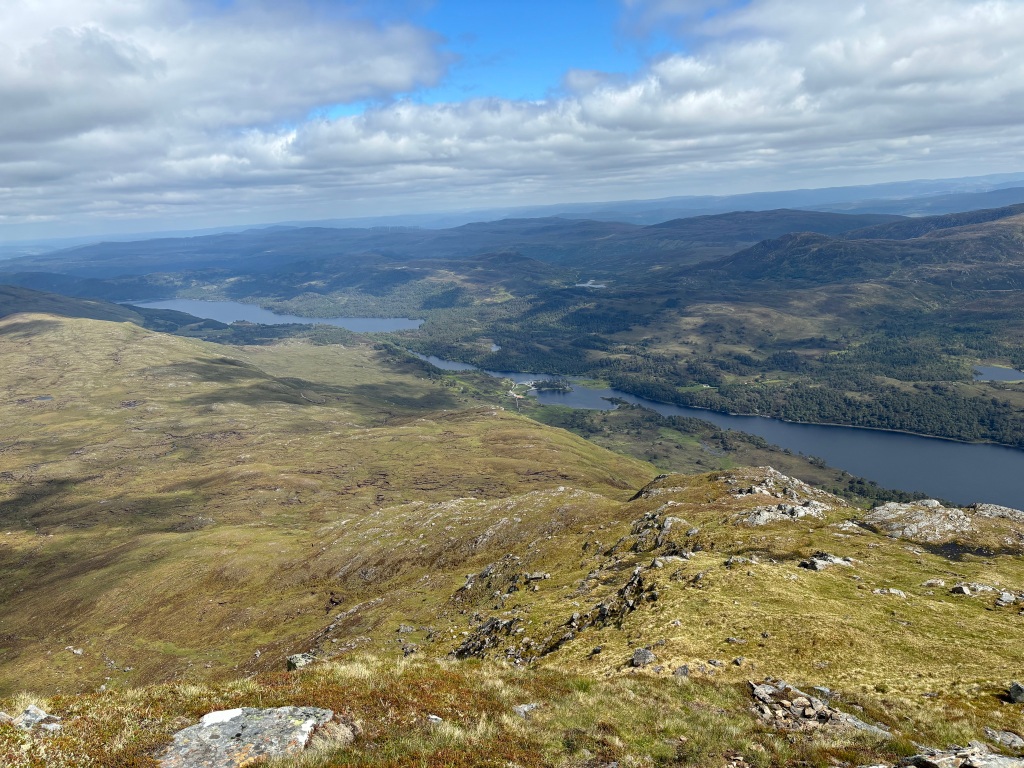

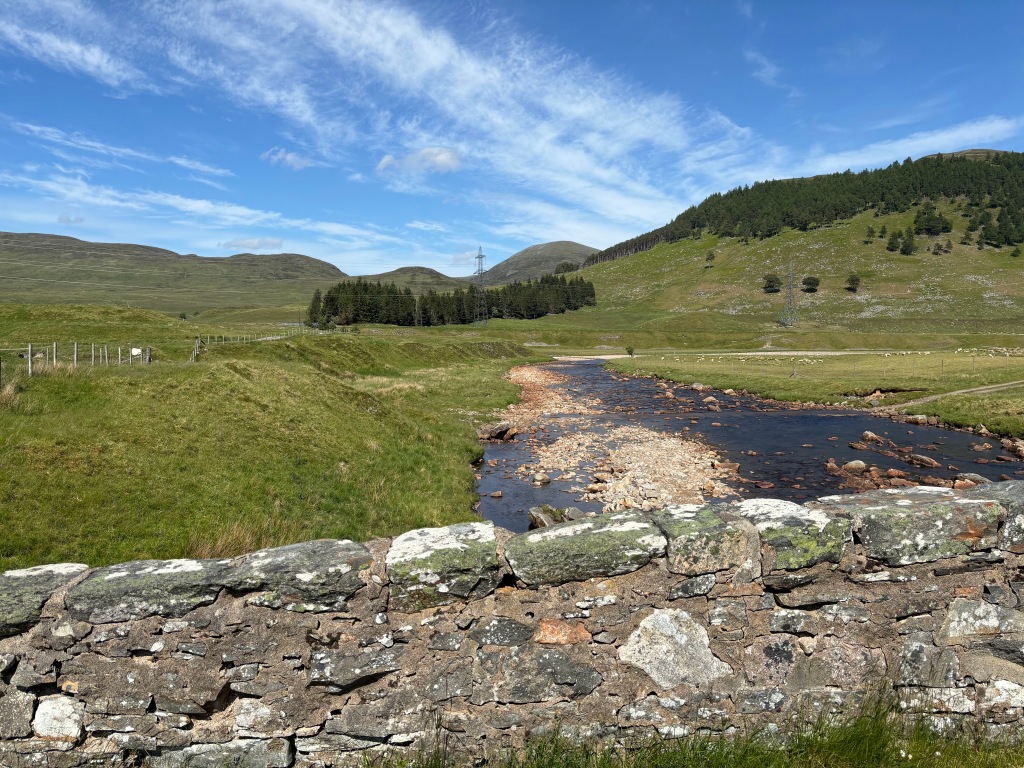

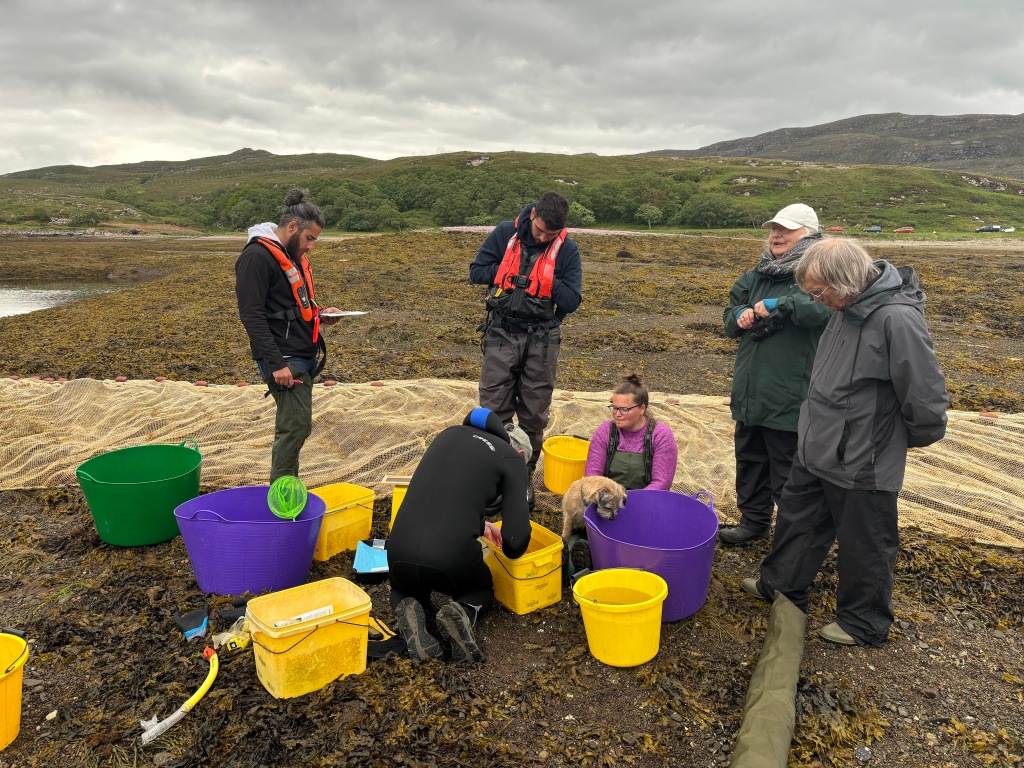
Leave a comment